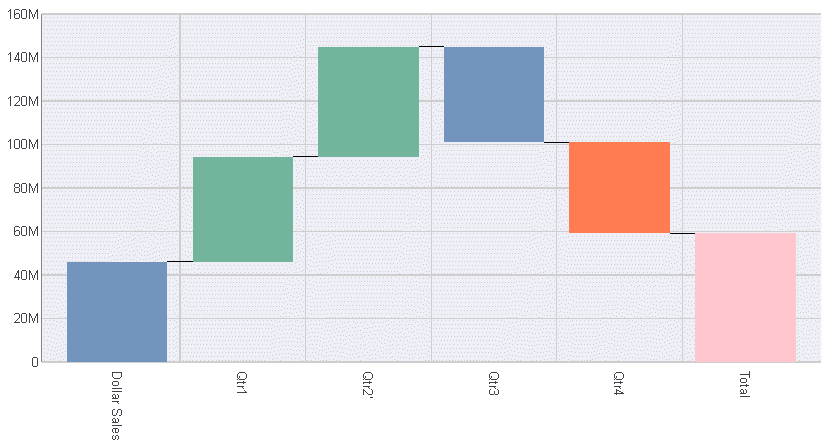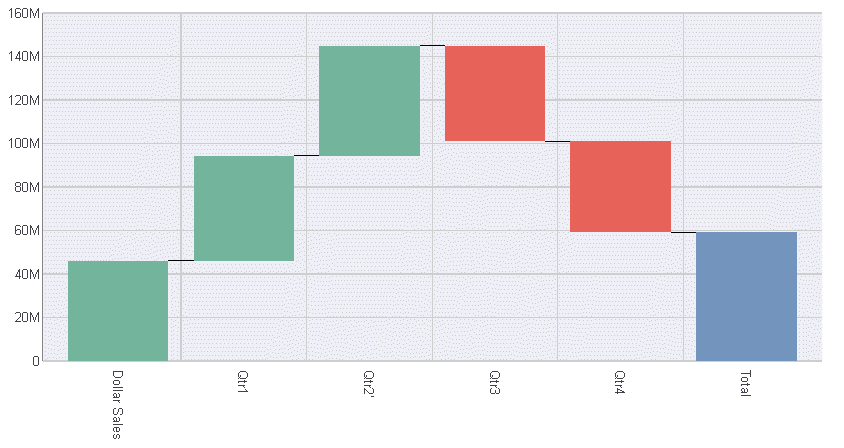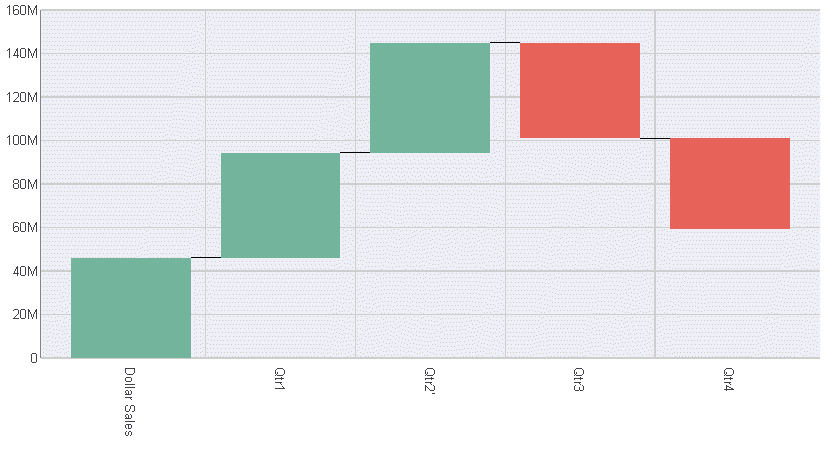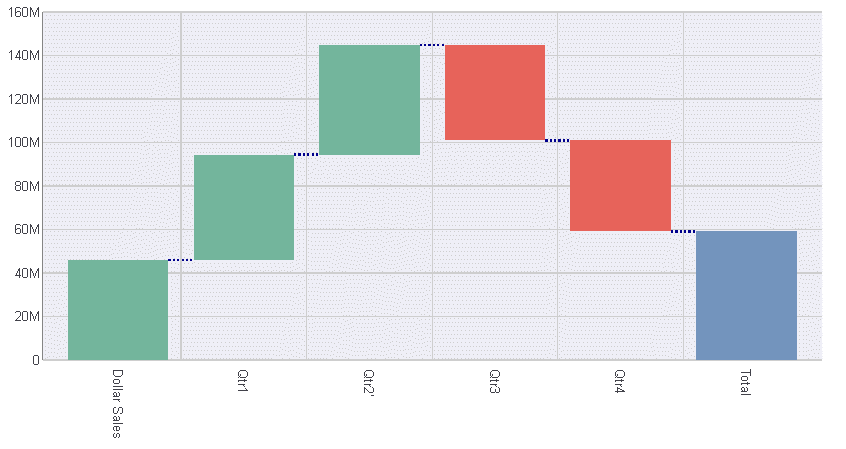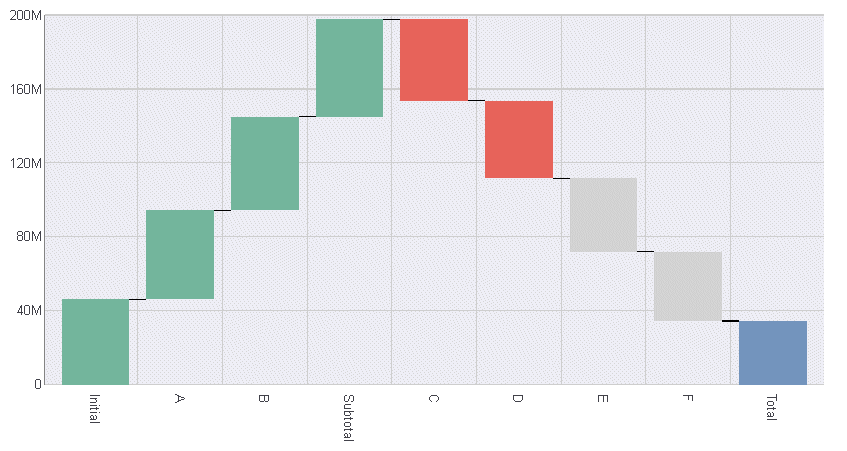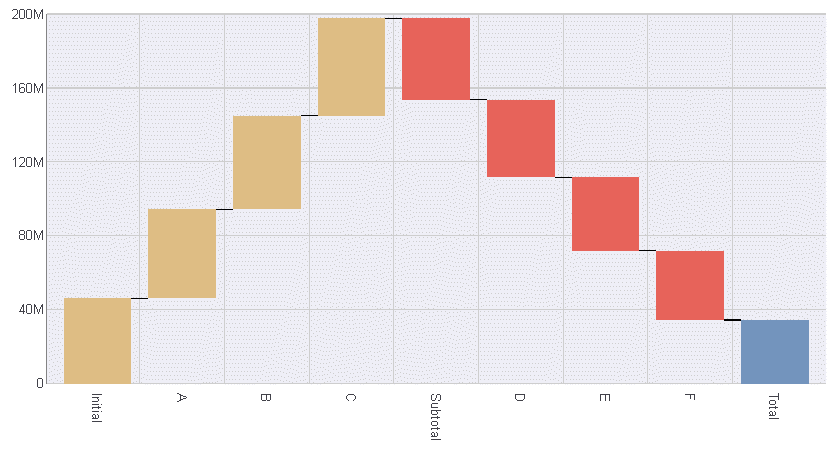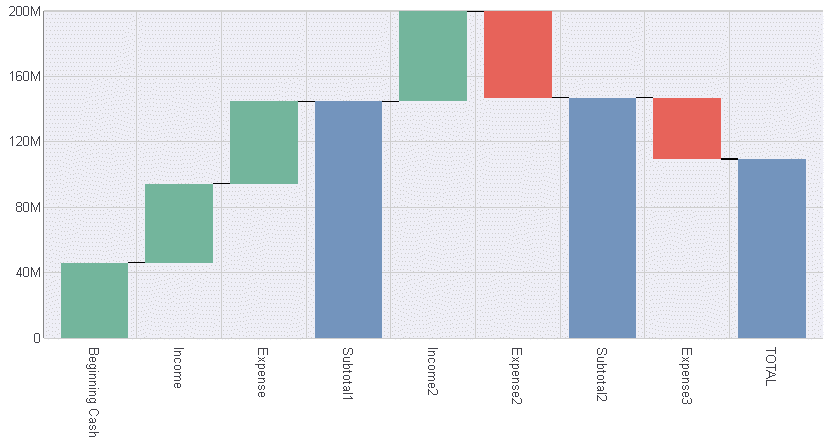This property controls the color of risers that represent
negative values in a waterfall chart.
x
Syntax: How to Color Negative Risers in a Waterfall Chart
waterfallProperties: {
negativeRiserColor: color },where:
- color
Defines the negative riser color.
Valid values are:
- A color string, enclosed in single
quotation marks ('), that defines a color by name, numeric specification
string, or gradient definition string. The default value is '#e2675b'.
- A JSON object that defines a gradient.
For information
about specifying colors and gradients, see Colors and Gradients.
Example: Setting the Waterfall Chart Negative Riser Color
The following request against the GGSALES
data source generates a waterfall chart in which the risers for
negative values are black:
DEFINE FILE GGSALES
INCR1 = DOLLARS + 500;
INCR2 = DOLLARS+1000;
DECR1 = -(DOLLARS- 500);
DECR2 = -(DOLLARS-1000);
END
GRAPH FILE GGSALES
SUM DOLLARS
INCR1 AS 'Qtr1'
INCR2 AS Qtr2'
DECR1 AS 'Qtr3'
DECR2 AS 'Qtr4'
ON GRAPH PCHOLD FORMAT JSCHART
ON GRAPH SET LOOKGRAPH VWATERFL
ON GRAPH SET STYLE *
*GRAPH_JS
legend: {visible:false},
waterfallProperties: {
negativeRiserColor: 'black'}
*END
INCLUDE=ENIADefault_combine.sty,$
ENDSTYLE
ENDThe output is:
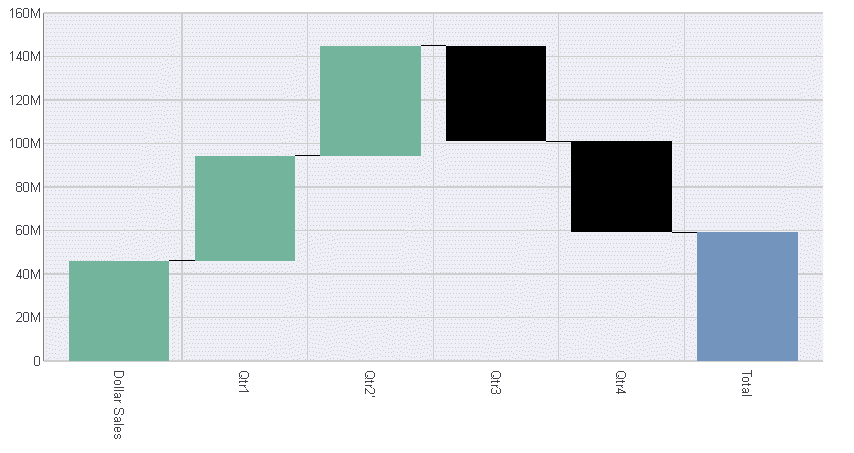
Note: You can use
series-specific properties to format risers individually, by specifying
a color for each group under series 0. For example:
DEFINE FILE GGSALES
INCR1 = DOLLARS + 500;
INCR2 = DOLLARS+1000;
DECR1 = -(DOLLARS- 500);
DECR2 = -(DOLLARS-1000);
END
GRAPH FILE GGSALES
SUM DOLLARS
INCR1 AS 'Qtr1'
INCR2 AS Qtr2'
DECR1 AS 'Qtr3'
DECR2 AS 'Qtr4'
ON GRAPH PCHOLD FORMAT JSCHART
ON GRAPH SET LOOKGRAPH VWATERFL
ON GRAPH SET STYLE *
*GRAPH_JS
legend: {visible:false},
series: [
{series: 0, group: 0, color: '#7593bd'},
{series: 0, group: 1, color: '#77b39a'},
{series: 0, group: 2, color: '#77b39a'},
{series: 0, group: 3, color: '#7593bd'},
{series: 0, group: 4, color: 'coral'},
{series: 0, group: 5, color: 'pink'},
]
*END
INCLUDE=ENIADefault_combine.sty,$
ENDSTYLE
ENDOn the output, each
riser has the color specified for that group:
